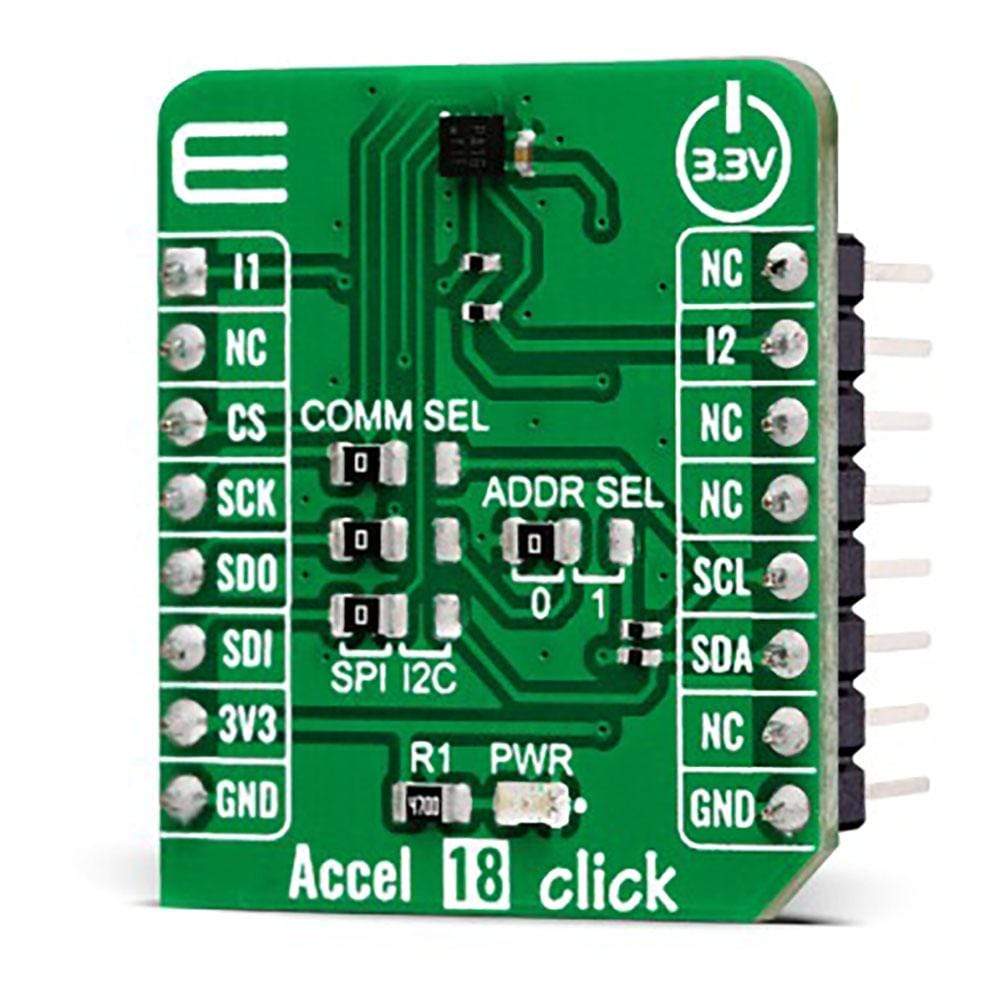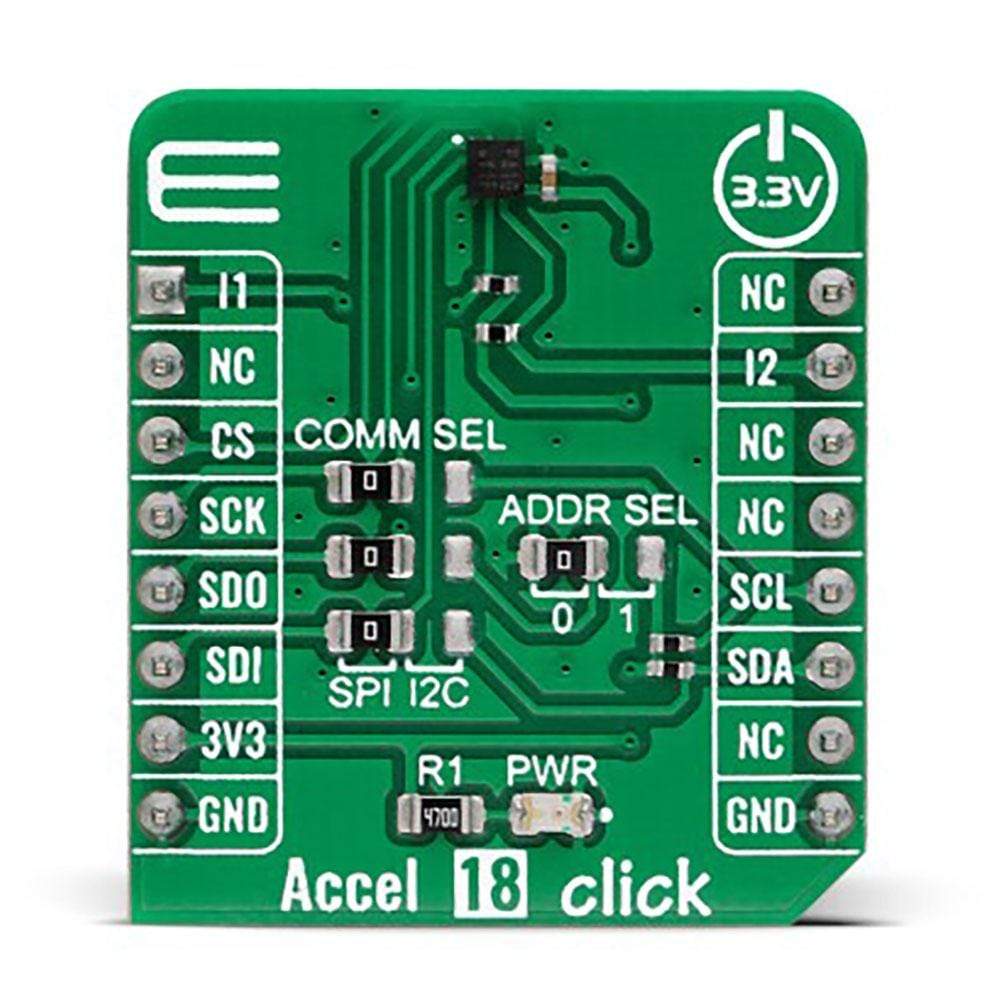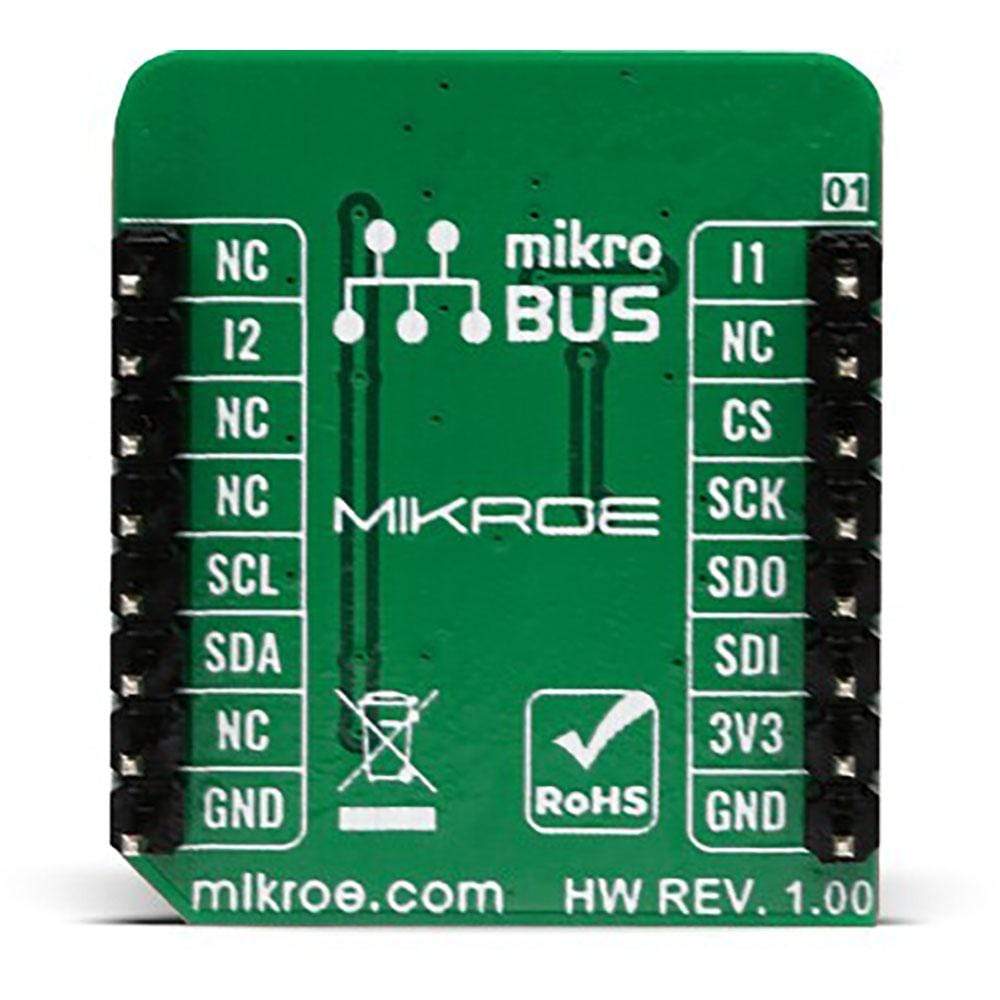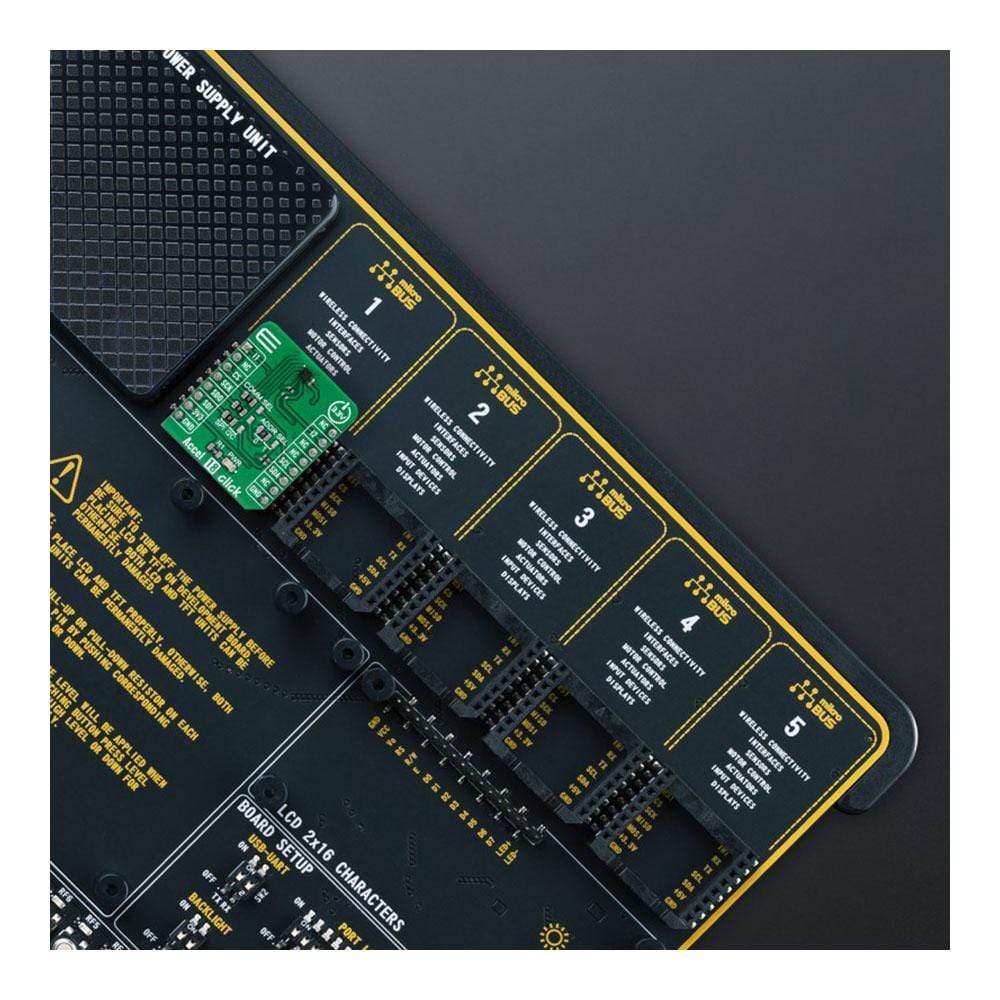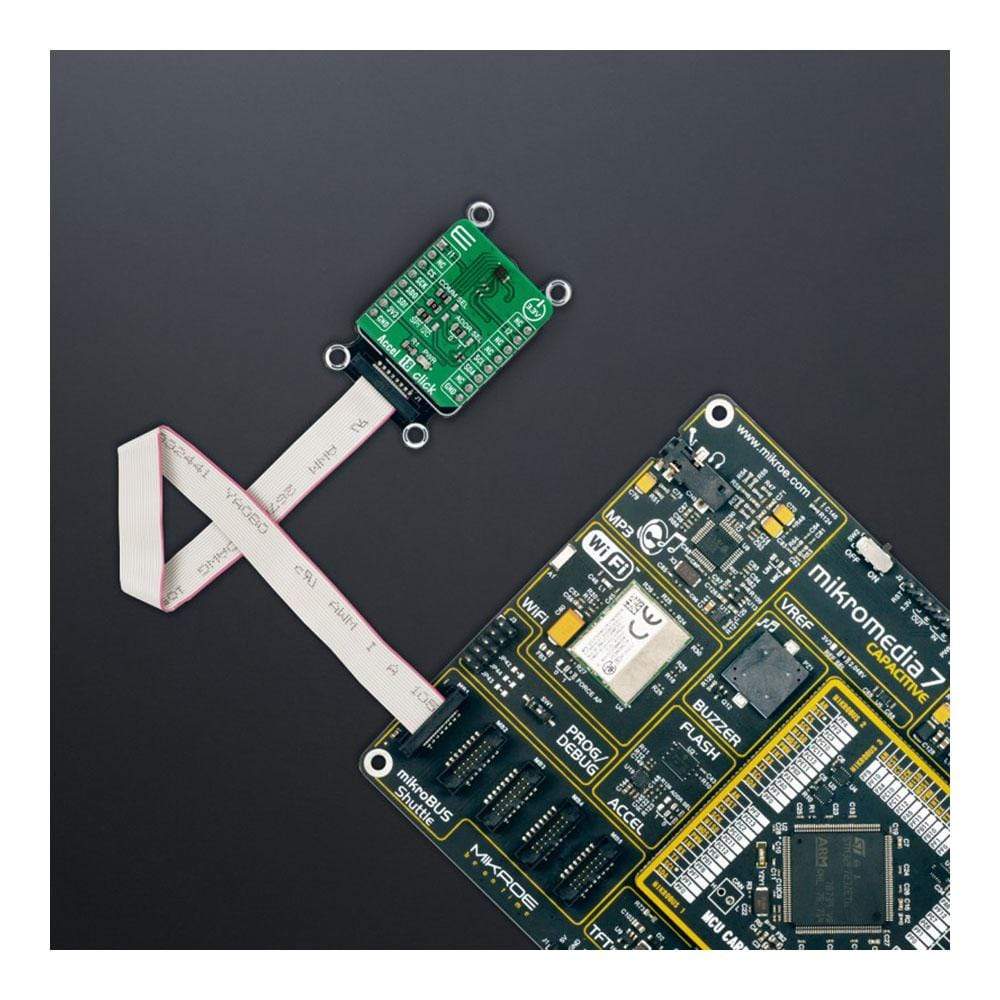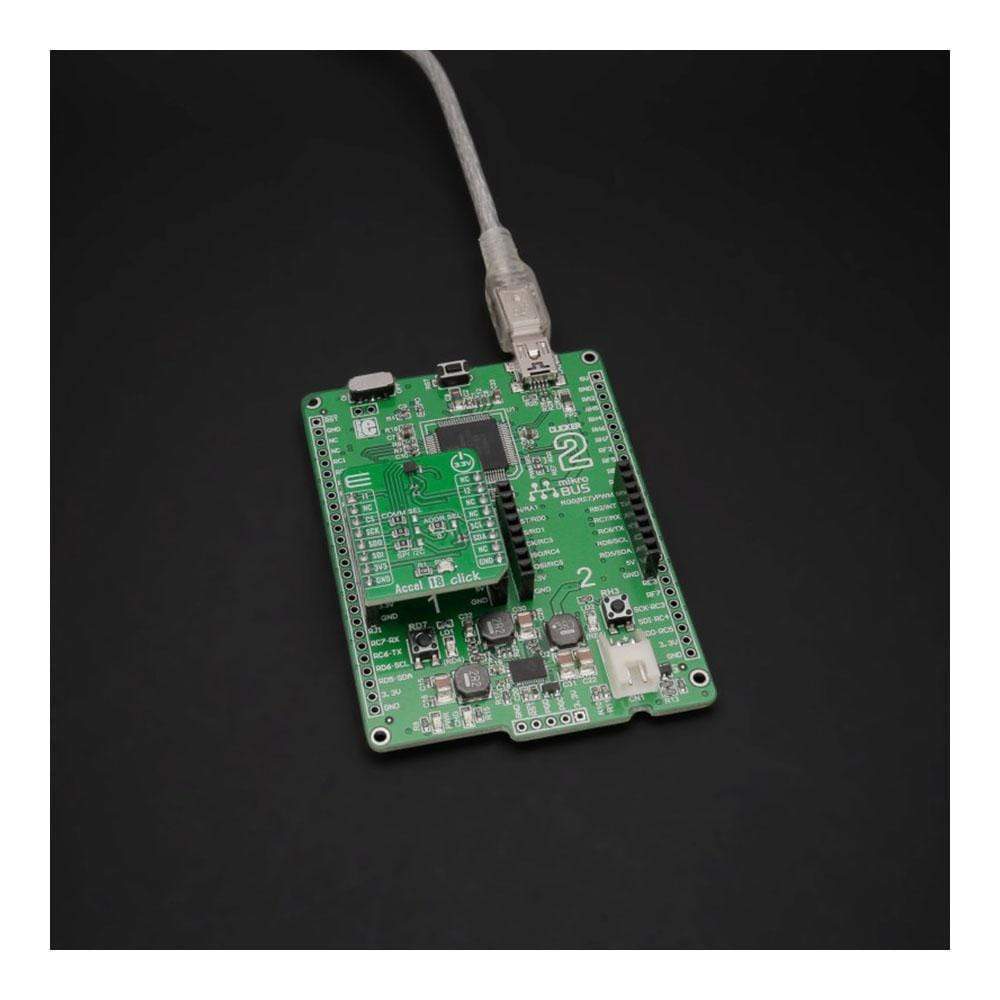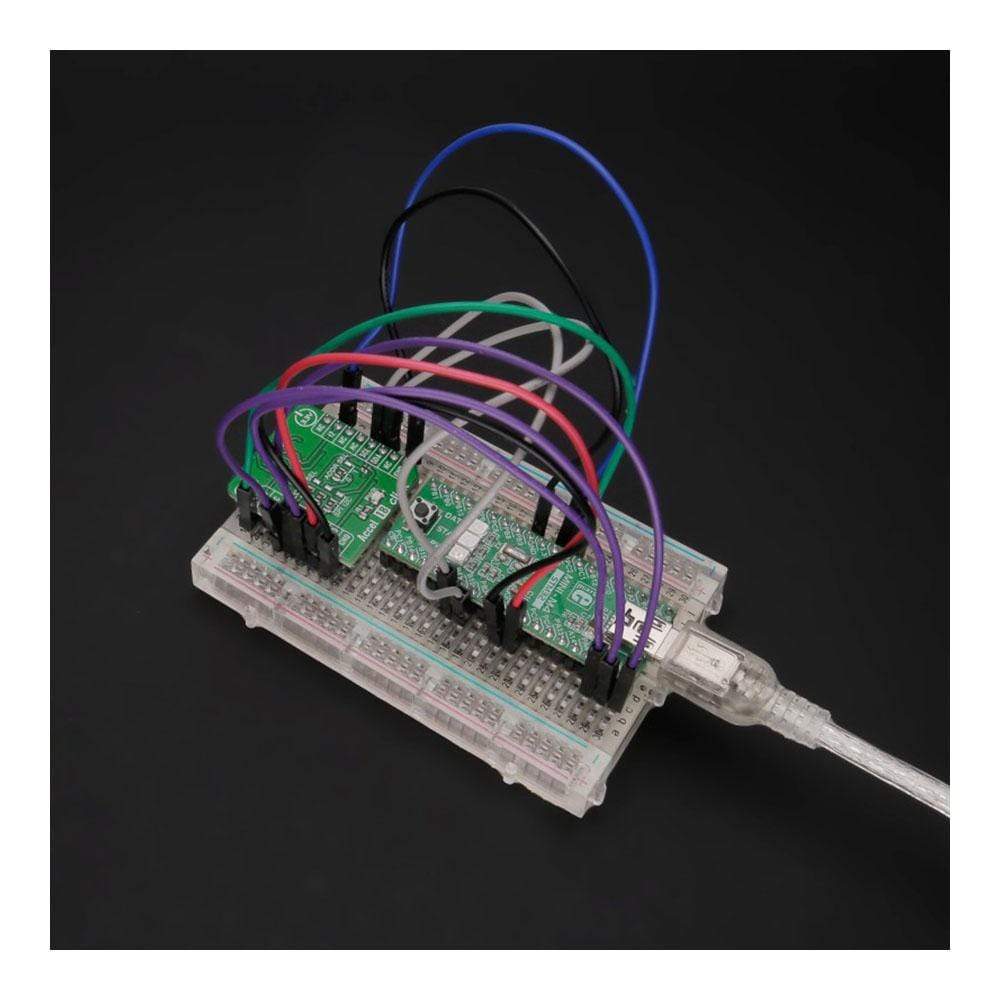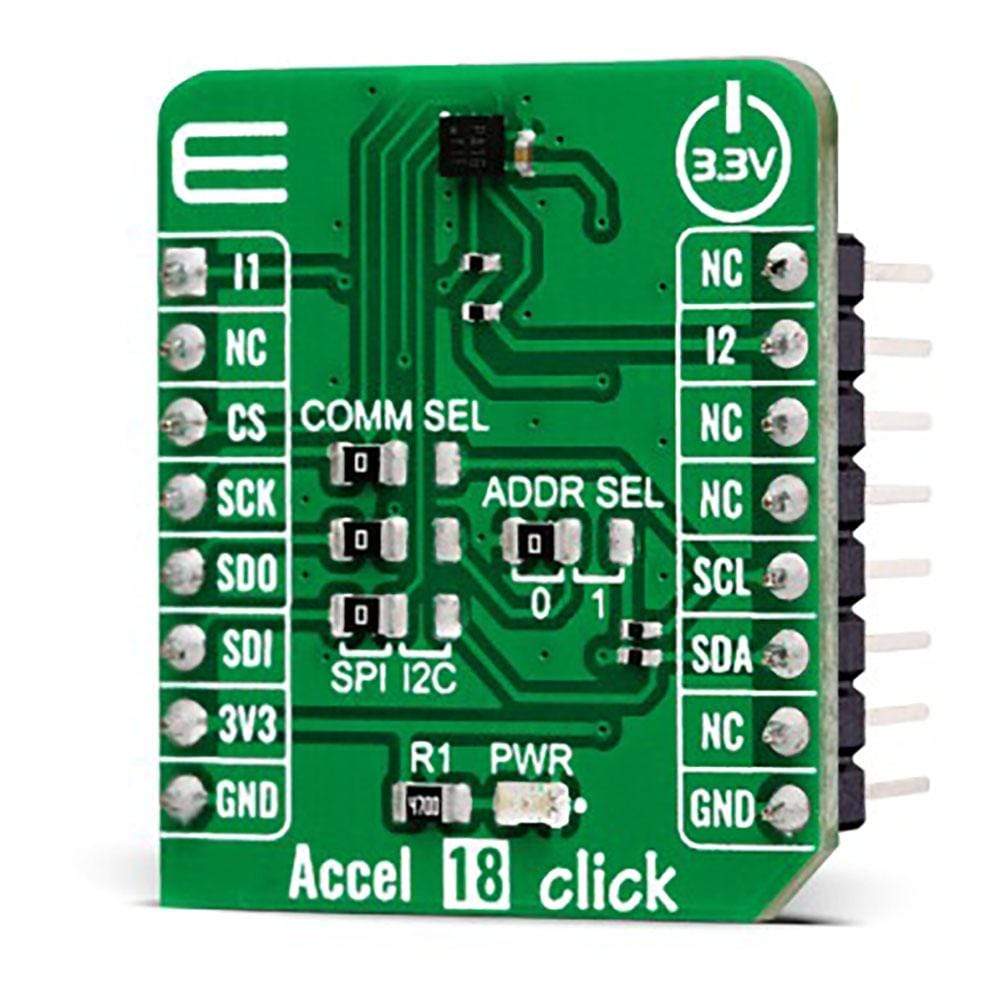
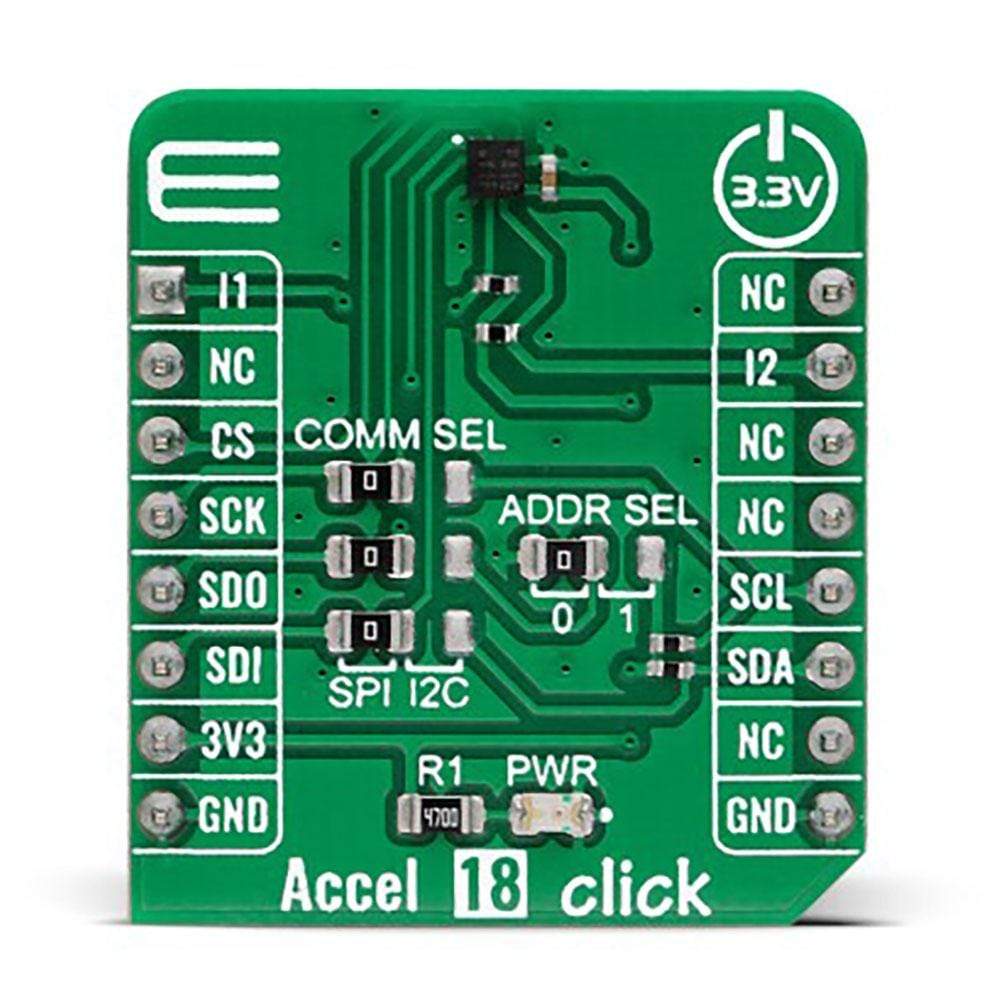
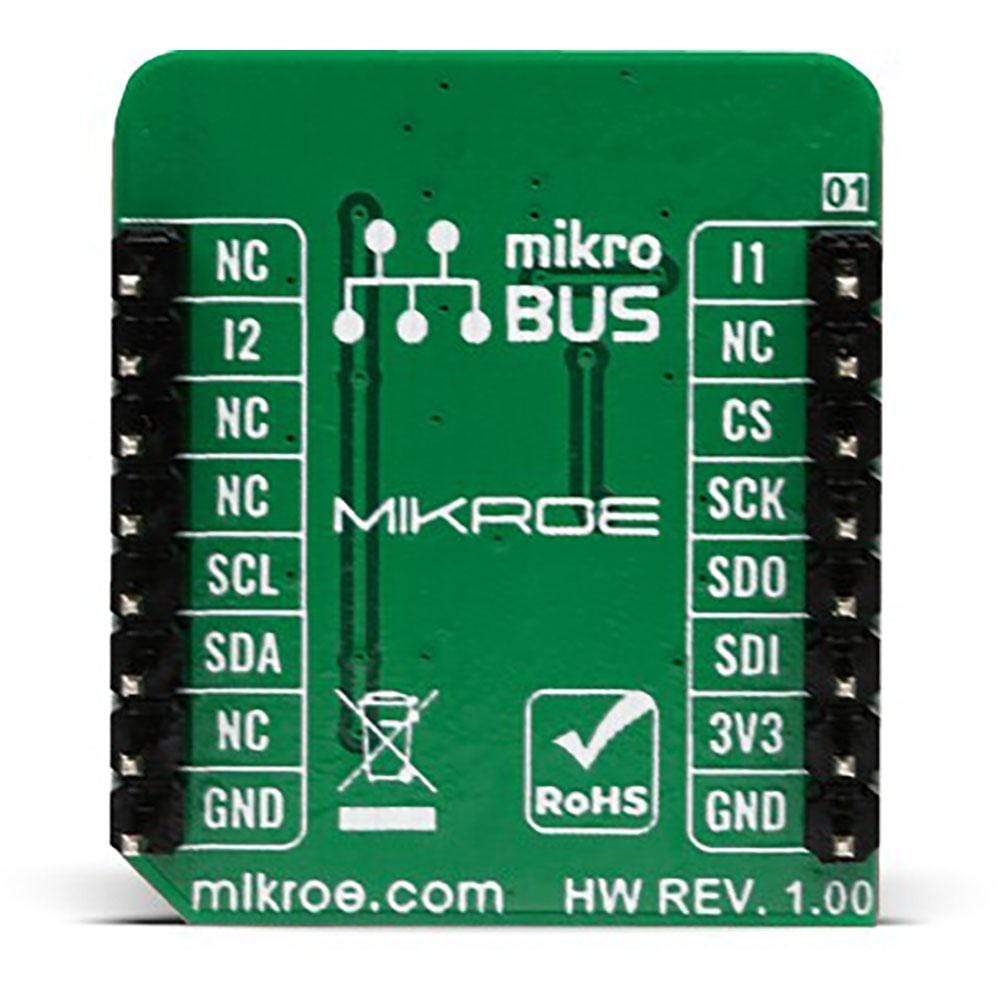
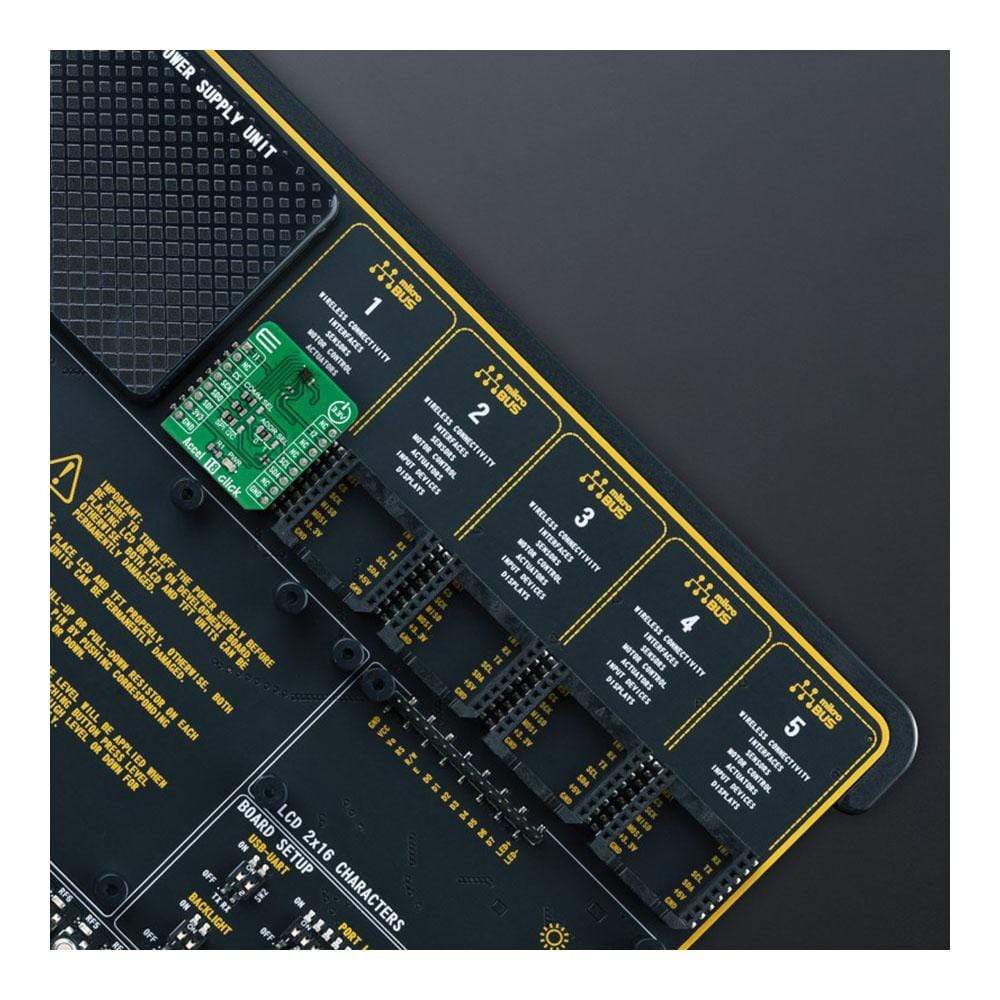
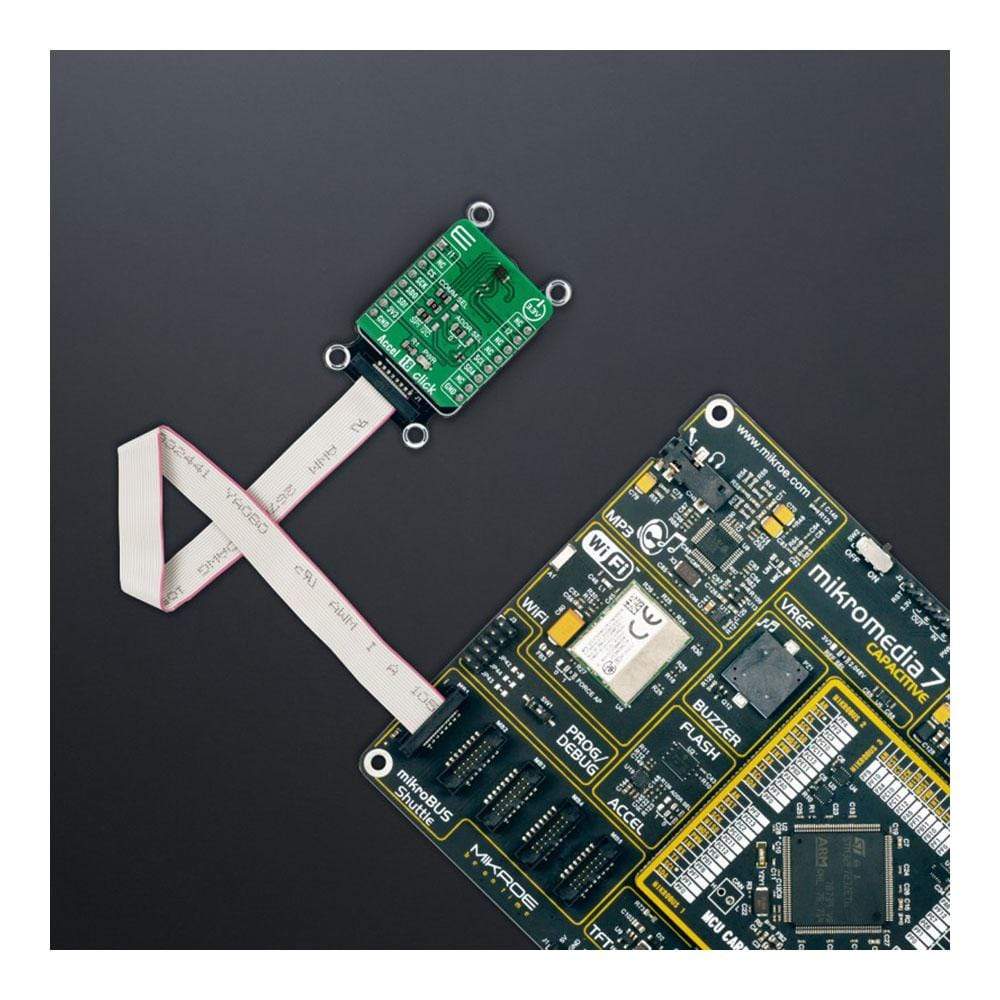
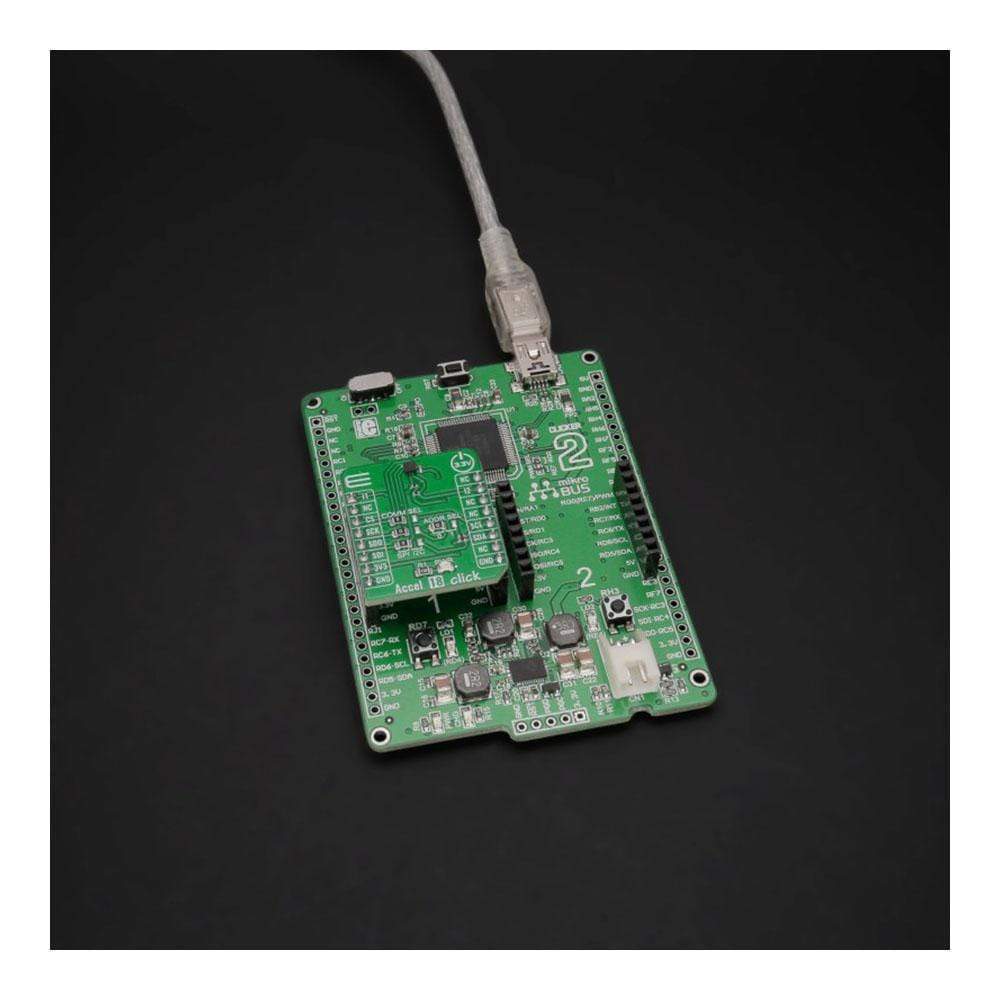
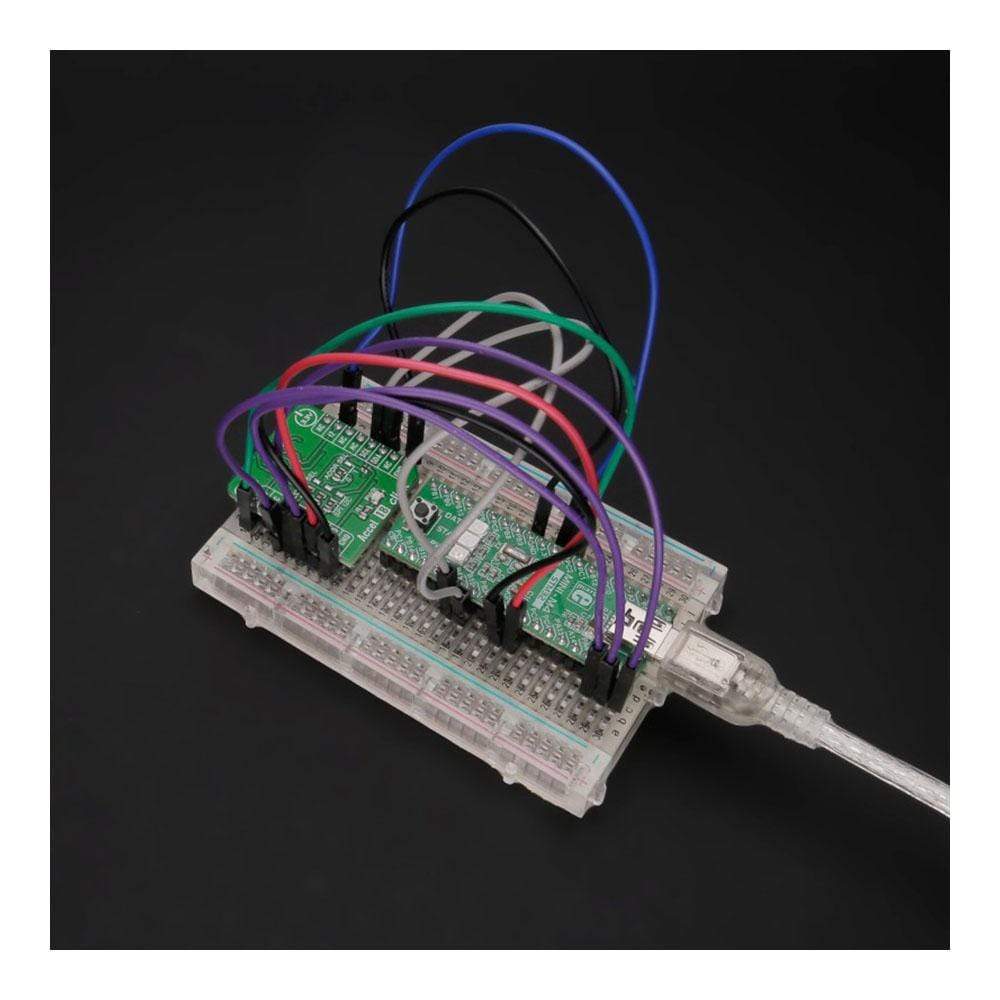
Overview
The Accel 18 Click Board™ is a compact add-on board that contains an acceleration sensor. This board features the MC3419, a digital output 3-axis accelerometer with a feature set optimized for consumer product motion sensing from MEMSIC. It allows selectable full-scale acceleration measurements in ranges of ±2g, ±4g, ±8g, and ±16g in three axes with a configurable host interface that supports both SPI and I2C serial communication. The MC3419 also features a dedicated motion block that implements algorithms to support any motion and shake detection, tilt/flip and tilt 35 position detection. This Click Board™ is suitable for various applications such as vibration and condition monitoring, test and measurements, predictive maintenance, and more.
The Accel 18 Click Board™ is supported by a mikroSDK compliant library, which includes functions that simplify software development. This Click Board™ comes as a fully tested product, ready to be used on a system equipped with the mikroBUS™ socket.
Downloads
How Does The Accel 18 Click Board™?
The Accel 18 Click Board™ as its foundation uses the MC3419, a highly reliable 16-bit digital triaxial acceleration sensor with a feature set optimized for consumer product motion sensing from MEMSIC. The MC3419 is highly configurable with a programmable acceleration range of ±2/±4/±8/±16g and a dedicated motion block that implements the latest algorithms to detect any motion, shake, tilt/flip, and tilt 35 positions. It is optimized for high-performance applications by supporting full 16-bit resolution at Output Data Rates (ODR) up to 1KHz. In addition to all these features, it also has excellent temperature stability and low power consumption/low active current.
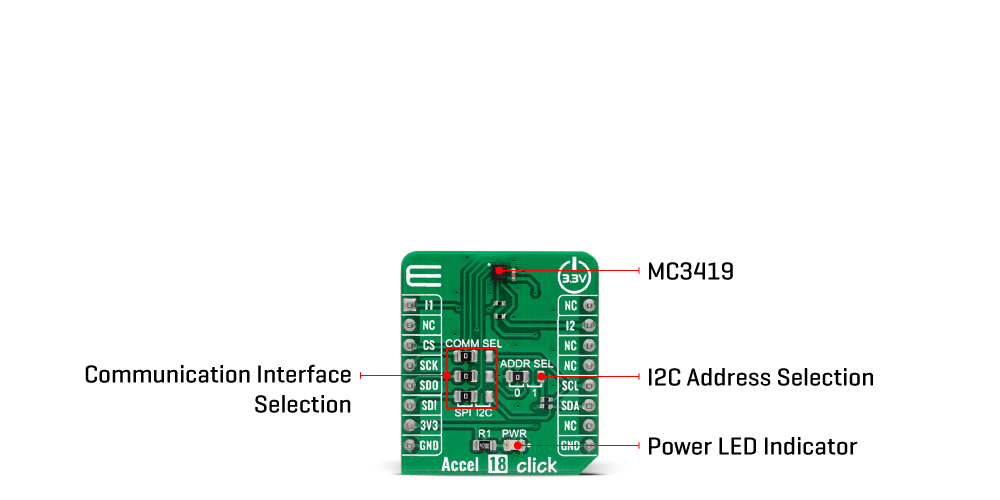
The MC3419 has two operational states: STANDBY (following a Power-Up sequence) and WAKE state. Operative states are software-controllable, with no automatic power control. In the WAKE state, acceleration data for the X, Y, and Z axes are sampled at a rate between 0.5 and 1000 samples/second. Changing from the STANDBY to WAKE state takes one sample period (less than 10 μs). Also, digital offset and gain calibration can be performed on the Accel board, if necessary, to reduce the effects of post-assembly influences and stresses, which may cause the sensor readings to be offset from their factory values.
The Accel 18 Click Board™ allows using both I2C and SPI interfaces with a maximum frequency of 1MHz for I2C and 10MHz for SPI communication. The selection can be made by positioning SMD jumpers labeled as COMM SEL to an appropriate position. Note that all the jumpers' positions must be on the same side, or the Click board™ may become unresponsive. While the I2C interface is selected, the MC3419 allows choosing the least significant bit (LSB) of its I2C slave address using the SMD jumper labeled as ADDR SEL. The Accel 18 also possesses two interrupts, I1 and I2, routed to the AN and INT pins on the mikroBUS™ used to signal MCU that an event has been sensed.
The Accel 18 Click Board™ can be operated only with a 3.3V logic voltage level. The board must perform appropriate logic voltage level conversion before use with MCUs with different logic levels. However, the Click board™ comes equipped with a library containing functions and an example code that can be used, as a reference, for further development.
Specifications
| Type | Motion |
| Applications | Can be used for various applications such as vibration and condition monitoring, test and measurements, predictive maintenance, and more |
| On-board modules | MC3419 - 16-bit digital triaxial acceleration sensor with a feature set optimized for consumer product motion sensing from MEMSIC |
| Key Features | Low power consumption, high performance, high reliability, integrated interrupt features, selectable serial interface, and more |
| Interface | I2C,SPI |
| Compatibility | mikroBUS |
| Click board size | S (28.6 x 25.4 mm) |
| Input Voltage | 3.3V |
Pinout diagram
This table shows how the pinout on the Accel 18 Click Board™ corresponds to the pinout on the mikroBUS™ socket (the latter shown in the two middle columns).
| Notes | Pin |  |
Pin | Notes | |||
|---|---|---|---|---|---|---|---|
| Interrupt 1 | I1 | 1 | AN | PWM | 16 | NC | |
| NC | 2 | RST | INT | 15 | I2 | Interrupt 2 | |
| SPI Chip Select | CS | 3 | CS | RX | 14 | NC | |
| SPI Clock | SCK | 4 | SCK | TX | 13 | NC | |
| SPI Data OUT | SDO | 5 | MISO | SCL | 12 | SCL | I2C Clock |
| SPI Data IN | SDI | 6 | MOSI | SDA | 11 | SDA | I2C Data |
| Power Supply | 3.3V | 7 | 3.3V | 5V | 10 | NC | |
| Ground | GND | 8 | GND | GND | 9 | GND | Ground |
Onboard settings and indicators
| Label | Name | Default | Description |
|---|---|---|---|
| LD1 | PWR | - | Power LED Indicator |
| JP1-JP3 | COMM SEL | Left | Communication Interface Selection SPI/I2C: Left position SPI, Right position I2C |
| JP4 | ADDR SEL | Left | I2C Address Selection 0/1: Left position 0, Right position 1 |
Accel 18 Click electrical specifications
| Description | Min | Typ | Max | Unit |
|---|---|---|---|---|
| Supply Voltage | - | 3.3 | - | V |
| Acceleration Range | ±2 | ±16 | g | |
| Sensitivity | 16384 | - | 2048 | LSB/g |
| Output Data Rate | 0.5 | - | 1000 | Hz |
| Operating Temperature Range | -40 | +25 | +85 | °C |
| General Information | |
|---|---|
Part Number (SKU) |
MIKROE-4826
|
Manufacturer |
|
| Physical and Mechanical | |
Weight |
0.02 kg
|
| Other | |
Country of Origin |
|
HS Code Customs Tariff code
|
|
EAN |
8606027383816
|
Warranty |
|
Frequently Asked Questions
Have a Question?
Be the first to ask a question about this.

